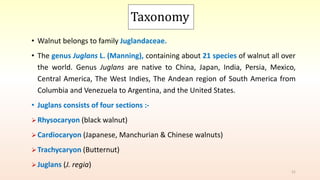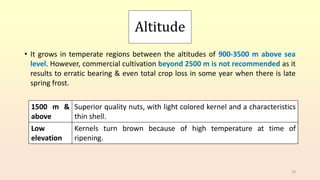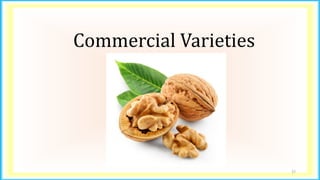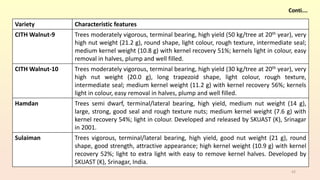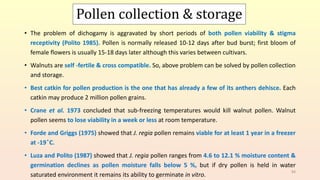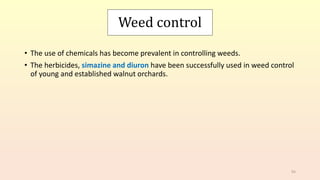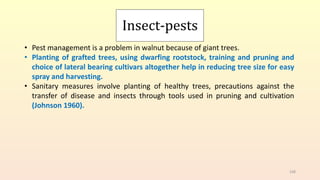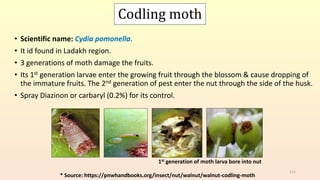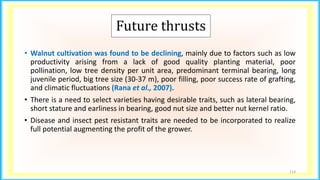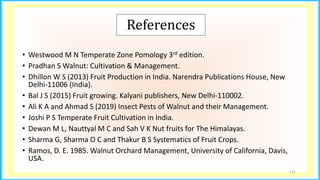This document provides an overview of walnut production technology. It discusses the botanical description of walnuts, including their origin in Southeast Europe. It outlines the key components of walnut cultivation such as varieties, propagation, planting, pruning, and harvesting. It also covers nutritional value, uses, production statistics globally and in key countries like China, Iran, and India. The document is a comprehensive reference on walnut cultivation practices.




















